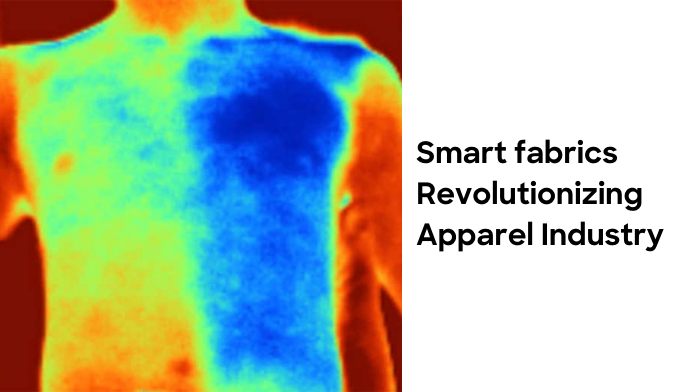Smart fabrics, a new era in the apparel industry. Technology is in all industries, and innovation in the apparel industry is growing rapidly. Clothes and covers which are made of Smart fabrics radiate heat and reflect light. It could help people and objects under the sun, to stay several degrees cooler.
As research at Huazhong University of Science and Technology in Wuhan, China. Guangming Tao and his colleagues developed a “metafabric” – Smart fabrics. It is by combining microscopic beads and fibers of titanium oxide, Teflon, and a plastic called polylactic acid. All embedded within larger fibers.
The beads of titanium oxide – a substance also found in sunscreens – and the Teflon reflect ultraviolet and visible light, while the polylactic acid fibers emit infrared light. The sizes of the particles are designed to optimize these properties.
The sizes of the particles are designed to optimize the properties like reflecting ultraviolet and visible light, emitting infrared light. The particles used in the process include the beads of titanium oxide, Teflon, and polylactic acid fibers.
“Through structural control, our metafabric achieves a nearly perfect mid-infrared emissivity, thereby maximizing heat dissipation,” says Tao.
The research team has also experimented with the usage of the smart fabric- metafabric on a person and also an object. In one of the tests, a volunteer wearing a vest, which is made of half metafabric and half of the cotton. The volunteer sat in direct sunlight for an hour. The skin temperature under the metafabric rose from around 31°C to 32°C over that time, while the skin temperature under the cotton rose to around 37°C.
In another test, as an object, cars were used. One was covered with the metafabric, another with a car cover which was shop-bought, and a third car was left uncovered. All the cars were left in the sun from 11 am to 1 pm. The uncovered car temperature rose to 60°C, The car with standard shop cover rose to 57°C and the car covered by metafabric rose to 30°C over that period.
The metafabric works effectively when it is in contact with the skin. If a person wears a metafabric garment over normal clothing then it losses much cooling effect. The reason is that less body heat would be conducted and then radiated away from the metafabric.
“The researchers are focusing on cooling people and objects exposed to direct sunlight, but there would still be a cooling effect in the shade”, says Tao.
“This technology can be seamlessly connected with mature, modern manufacturing,” adds Tao. Some well-known clothing brands are interested in the metafabric, he says. “We hope that our products will be available in a year or so.”
“This work is absolutely impressive based on its outdoor cooling performance,” says Po-Chun Hsu at Duke University in North Carolina.
Hsu and his colleagues have developed cooling fabrics that work in different ways. These fabrics are transparent and do not emit infrared. It is a known fact that the main way that our bodies lose heat is by emitting infrared from our skin, but normal clothing blocks most infrared radiation.
This team has shown that wearing infrared-transparent clothes indoors is equivalent to reducing the temperature by 2°C. Hsu thinks the widespread adoption of such clothing could help tackle climate change by reducing the demand for air conditioning.













